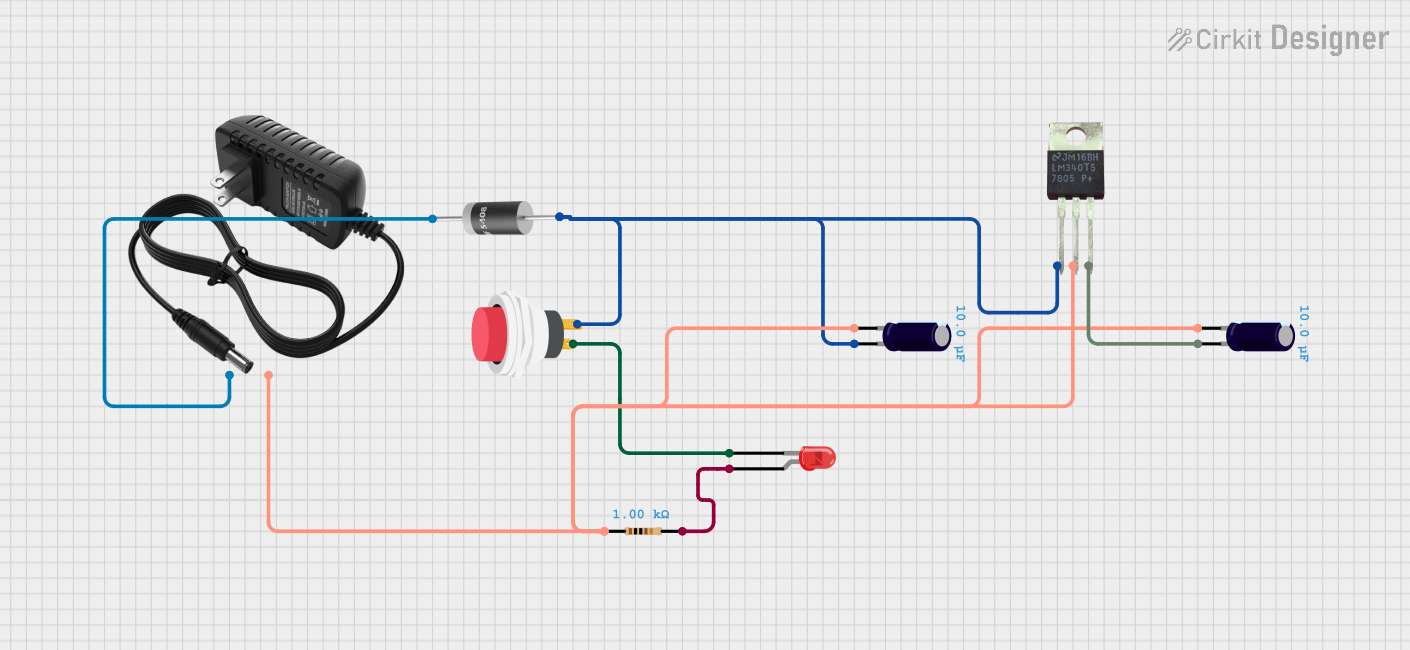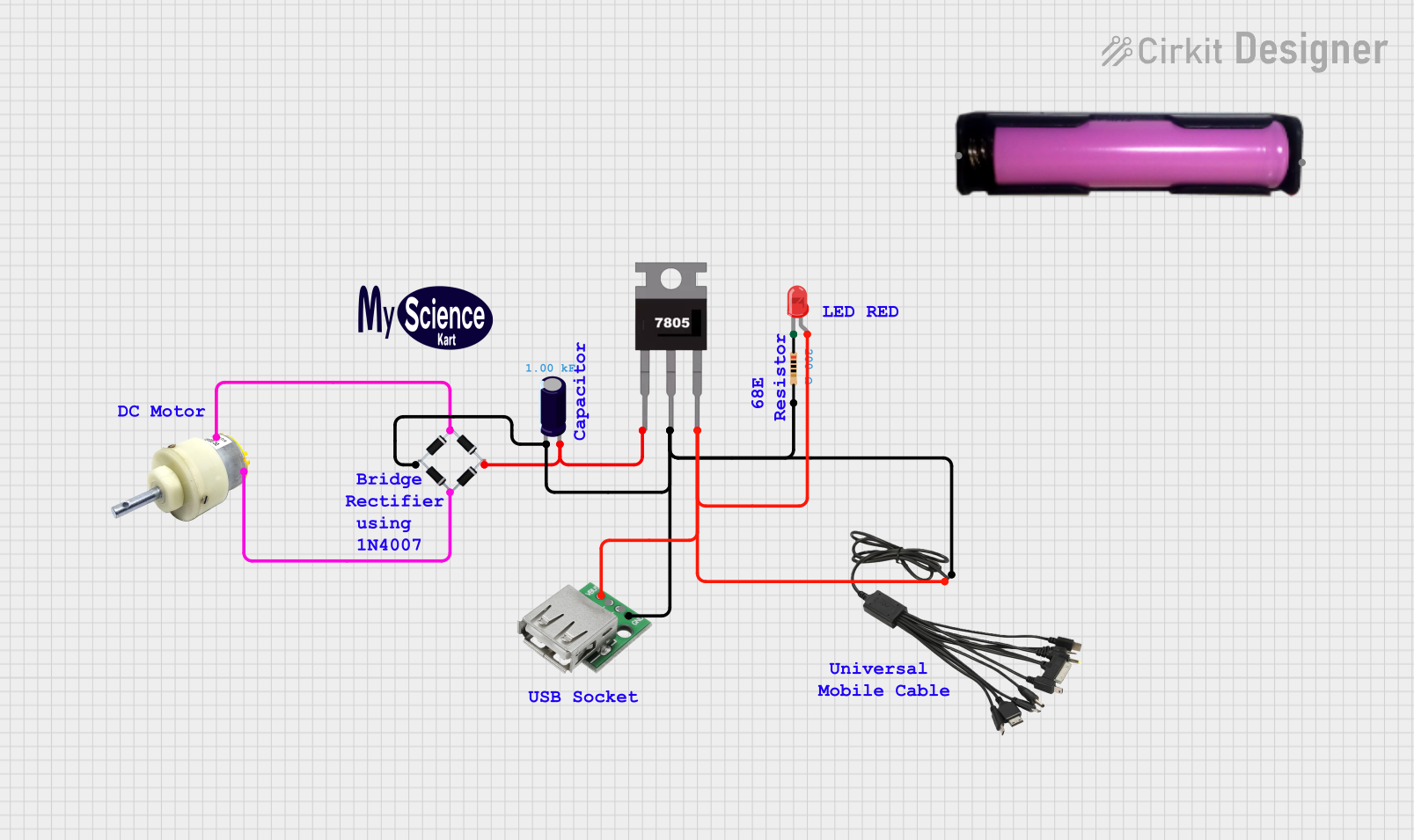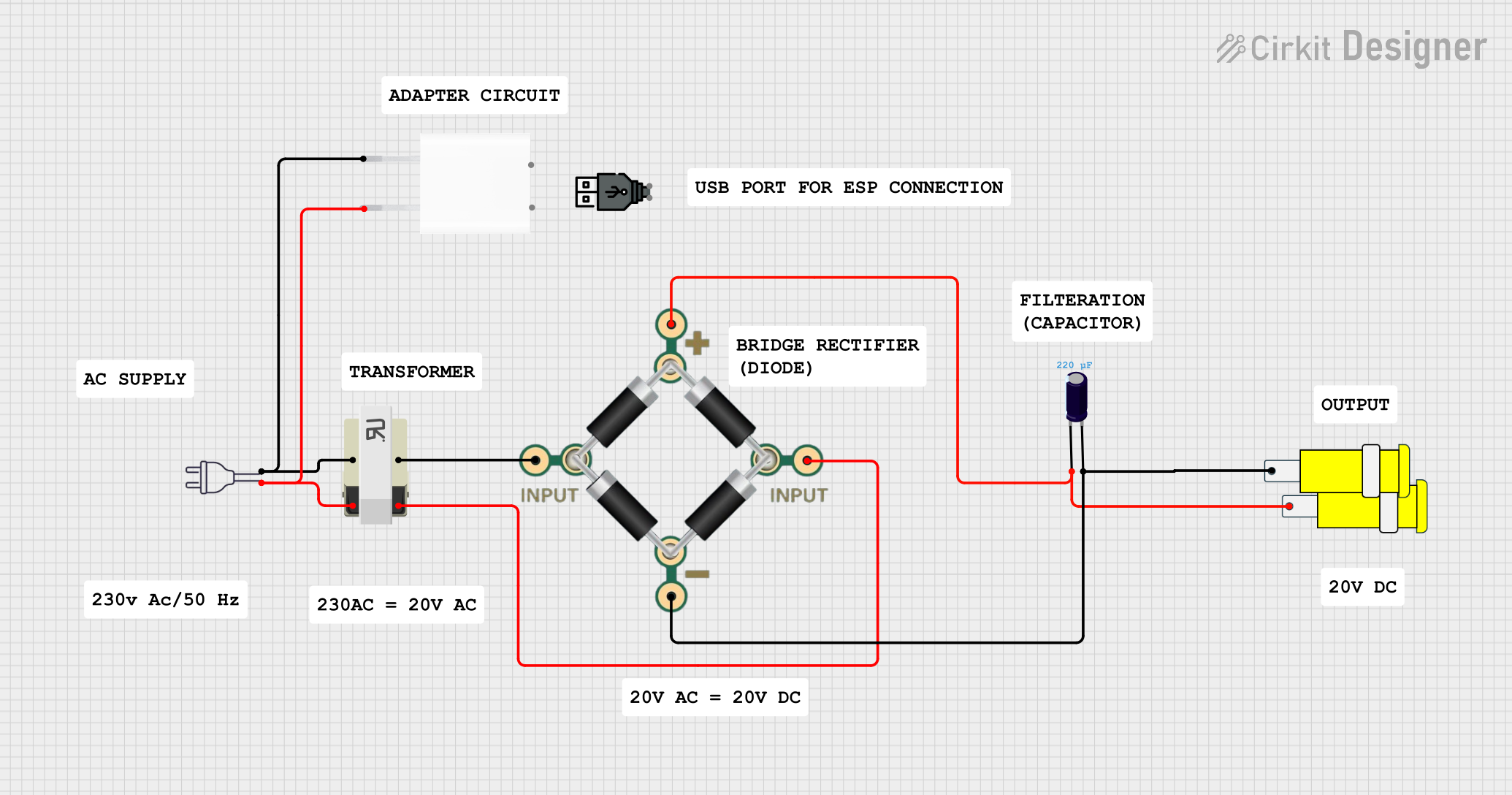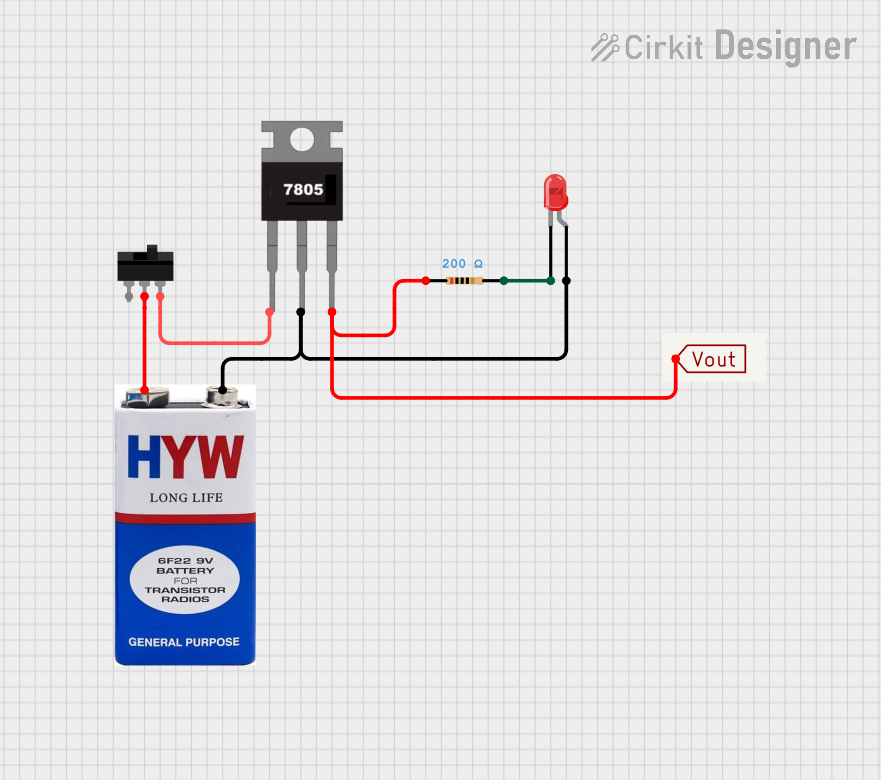
How to Use 5v: Examples, Pinouts, and Specs

 Design with 5v in Cirkit Designer
Design with 5v in Cirkit Designer5V Power Supply Documentation
1. Introduction
A 5V power supply is a fundamental electronic component that provides a stable and regulated output voltage of 5 volts. It is widely used in powering low-voltage electronic devices, microcontrollers, sensors, and other circuits. The 5V power supply is essential in applications where precise voltage regulation is required to ensure the proper functioning of sensitive components.
Common Applications:
- Powering microcontrollers (e.g., Arduino, Raspberry Pi)
- Driving sensors and modules (e.g., temperature sensors, LCD displays)
- Charging USB-powered devices
- Supplying power to small motors and actuators
- Prototyping and breadboard circuits
2. Technical Specifications
The following table outlines the key technical details of a typical 5V power supply:
| Parameter | Specification |
|---|---|
| Output Voltage | 5V DC ± 5% |
| Input Voltage Range | 100-240V AC (for AC-DC adapters) |
| Output Current | 500mA to 3A (varies by model) |
| Power Rating | 2.5W to 15W (depending on current) |
| Efficiency | ≥ 80% |
| Ripple and Noise | ≤ 50mV (peak-to-peak) |
| Operating Temperature | -10°C to 50°C |
| Protection Features | Overcurrent, Overvoltage, Short Circuit |
Pin Configuration (for DC Barrel Jack Output)
| Pin | Description |
|---|---|
| Center | Positive terminal (+5V) |
| Outer | Ground (GND) |
3. Usage Instructions
How to Use a 5V Power Supply in a Circuit:
Connect the Output Terminals:
- Identify the positive (+5V) and ground (GND) terminals of the power supply.
- Connect the positive terminal to the VCC or power input of your circuit.
- Connect the ground terminal to the GND of your circuit.
Verify Voltage and Current Requirements:
- Ensure that the connected device operates at 5V and does not exceed the maximum current rating of the power supply.
Power On the Supply:
- Plug in the power supply to an AC outlet (if using an AC-DC adapter) or connect it to a DC source.
- Verify the output voltage using a multimeter before connecting sensitive components.
Use Decoupling Capacitors:
- Add a 0.1µF ceramic capacitor and a 10µF electrolytic capacitor near the power input of your circuit to reduce noise and stabilize the voltage.
Important Considerations:
- Polarity: Always double-check the polarity of the connections to avoid damaging your components.
- Current Rating: Ensure the power supply can provide sufficient current for all connected devices.
- Heat Dissipation: If the power supply gets warm during operation, ensure proper ventilation to prevent overheating.
- Protection Features: Use a fuse or overcurrent protection circuit for added safety.
4. Example Application with Arduino UNO
A 5V power supply is commonly used to power an Arduino UNO. Below is an example of how to connect and use it:
Circuit Diagram:
- Connect the positive terminal of the 5V power supply to the Arduino's 5V pin.
- Connect the ground terminal of the power supply to the Arduino's GND pin.
Sample Code:
The following Arduino code demonstrates how to blink an LED using a 5V power supply:
// Blink an LED using a 5V power supply
// Connect the LED's positive leg to pin 13 and the negative leg to GND
// Use a 220-ohm resistor in series with the LED to limit current
void setup() {
pinMode(13, OUTPUT); // Set pin 13 as an output
}
void loop() {
digitalWrite(13, HIGH); // Turn the LED on
delay(1000); // Wait for 1 second
digitalWrite(13, LOW); // Turn the LED off
delay(1000); // Wait for 1 second
}
5. Troubleshooting and FAQs
Common Issues and Solutions:
| Issue | Possible Cause | Solution |
|---|---|---|
| No output voltage | Power supply not connected properly | Check input connections and power on |
| Voltage too high or too low | Faulty regulator or incorrect input | Verify input voltage and replace unit |
| Device not powering on | Insufficient current capacity | Use a power supply with higher rating |
| Overheating of power supply | Overloaded or poor ventilation | Reduce load or improve airflow |
| Noise or instability in circuit | Lack of decoupling capacitors | Add 0.1µF and 10µF capacitors |
Frequently Asked Questions:
Can I use a 5V power supply to charge USB devices?
- Yes, as long as the power supply provides sufficient current (e.g., 1A for most smartphones).
What happens if I connect a 3.3V device to a 5V power supply?
- This may damage the device. Use a voltage regulator or level shifter to step down the voltage.
Can I use a 5V power supply with an Arduino UNO?
- Yes, you can power the Arduino UNO via the 5V pin or the USB port.
How do I know if my power supply is overloaded?
- Symptoms include overheating, voltage drops, or the power supply shutting off. Reduce the load to resolve the issue.
6. Conclusion
The 5V power supply is a versatile and essential component for powering low-voltage electronic devices and circuits. By following the usage instructions and best practices outlined in this documentation, you can ensure reliable and safe operation in your projects. Whether you're powering an Arduino, sensors, or other devices, the 5V power supply is a dependable choice for your electronic needs.
Explore Projects Built with 5v

 Open Project in Cirkit Designer
Open Project in Cirkit Designer
 Open Project in Cirkit Designer
Open Project in Cirkit Designer
 Open Project in Cirkit Designer
Open Project in Cirkit Designer
 Open Project in Cirkit Designer
Open Project in Cirkit DesignerExplore Projects Built with 5v

 Open Project in Cirkit Designer
Open Project in Cirkit Designer
 Open Project in Cirkit Designer
Open Project in Cirkit Designer
 Open Project in Cirkit Designer
Open Project in Cirkit Designer
 Open Project in Cirkit Designer
Open Project in Cirkit Designer